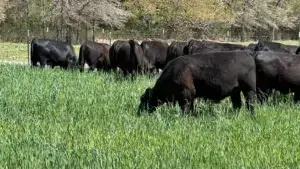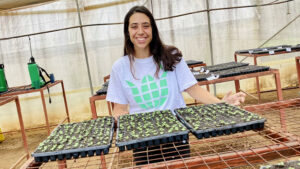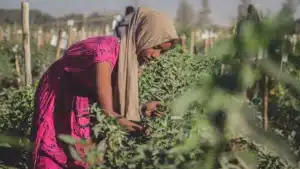In 2015, we did our first pilot project in Ethiopia on forages.
Ethiopia was the first project for Plant Breeders Without Borders (PBWB) sponsored by The Crawford Fund. This project led onto another pilot project on Bambara groundnut in Indonesia with Bayer and this eventually led to Bayer, sponsoring PBWB for the project in Nepal with millet and buckwheat and future projects in Ecuador, Ghana, Tanzania and Fiji when COVID allows.
Ethiopia has a population of 112 million people. When the growing season is good, the country can produce enough food to feed its population. During times of drought and famine, it can be severe due to the high population, so food security is paramount for future planning in Ethiopia. A reliable source of protein is critical for infant growth, so food sources high in this have been a good food source for their population.
Meat and milk from livestock are a rich source of protein, and the Ethiopian government was keen at the time of the project to increase the number of livestock to improve food security.
As an example of the importance of livestock, my most interesting experience in Ethiopia involved the dairy industry. There is a strong demand for milk products such as butter. I came across a cheese that was made by a tribe in northern Ethiopia that was said to have a shelf life of eight months without refrigeration. The secret was in the herbs and the smoking process that they did with the cheese. A product such as this would have been an excellent protein source in times of drought due to its long shelf life. The greatest challenge for the dairy industry was the lack of refrigeration to increase the shelf life of milk and butter. Added to this, there are over 70 religious holidays in Ethiopia where people are not allowed to consume animal products. This meant that milk products would go to waste on these days due to no refrigeration.
In a lot of these developing countries, their livestock are fed on natural unimproved pastures. These areas are under heavy grazing due to high stock numbers, and this leads to problems such as soil erosion.
The solution is to plant improved pasture species. But it is not as easy as it sounds. Most of the grazing land is public land so no one has the responsibility of maintaining and improving it. Even if the farmers own the land, it is nearly impossible for them to find seed of improved varieties to sow into it. Why is this the case? Forage companies generally don’t sell seed into developing countries as they are worried about losing control of the varieties.
All these problems led to the International Livestock Research Institute (ILRI) in Addis Ababa getting in contact with PBWB to see if they could train farmers and technical staff how to breed their own varieties of forages and do seed production of them.
Most farmers were feeding their livestock teff straw, the staple cereal crop for Ethiopia. The seed is harvested off the plants and is used to make a large, fermented pancake called injera. As Ethiopians value their injera more than they do gold, they would never allow their livestock to graze the teff grass before it becomes reproductive. By the time seed is harvested from teff, the straw has low forage quality so feeding this to livestock would result in them losing weight or not being able to produce much milk.
Even though Ethiopia is located close to the equator, it has a temperate environment due to its high altitude. So, farmers there were interested in the species that I breed here in Australia, such as oats, alfalfa, vetch and ryegrass. For a week I ran a workshop in Ethiopia training smallholder farmers and technical staff how to breed their own variety of forages and how to produce seed of them. The idea of the project was to make Ethiopia self sufficient for forage seed and not have to worry about having to access seed from overseas.
Farmers from Ethiopia were looking for a hand up rather than a handout when it came to developing their own forages. Training is the best form of aid development. Every dollar that is spent on training in developing countries can lead to $4 return. The idea of the training was to move Ethiopia from the informal to the formal seed sector. This means rather than farmers selling seed to one another, seed companies are started by farmers to fill the gap where overseas companies are not willing to invest in.













